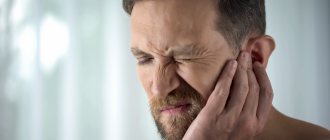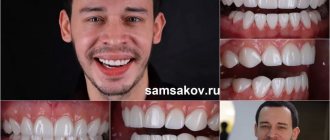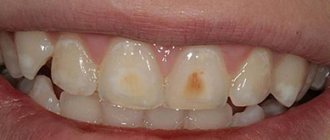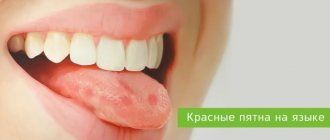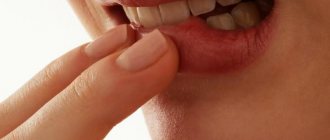According to statistics, caries occurs more often in children than in adults. This is one of the most common reasons for visiting a dentist, because not only permanent teeth, but also baby teeth are susceptible to destruction.
Children do not like to be treated, and often parents feel sorry for the child until the last moment and do not take him to the dentist in order to avoid stressful situations. But you need to understand that the health of his teeth in adulthood will depend on how they care for their baby’s oral cavity in childhood.
What are the causes of caries in children
The appearance of caries can be due to various reasons.
Insufficient or incorrect hygiene
Children most often do not want to brush their teeth - they are capricious because they do not like the process itself or the taste of the toothpaste. And parents often follow the lead and let the situation take its course, without insisting on the need for this procedure. However, it is necessary to teach a child to brush their teeth from a very early age, so that by the age of two the child himself shows a desire to take care of his teeth. Dentists recommend starting caries prevention immediately after the first teeth erupt.
Prolonged contact with the pacifier
In dentistry there is such a thing as “bottle caries”. It can develop before the age of 1 year, when the child is fed too long and often from a bottle with a nipple. Most often, such caries affects the upper front teeth, and the consequences are really serious.
Transmission of infection from parents
Many people are familiar with the situation when a child suddenly dropped a pacifier on the floor, the mother quickly picked it up, licked it and returned it to the baby. It's not as harmless as it might seem. This is how bacteria are transmitted that cause caries. For the same reason, you should not lick the baby's spoon when feeding. The infection can be transmitted even through kissing, so parents and other relatives who are in close contact with the child should carefully monitor the health of their teeth.
Congenital problems
Often, dental problems are congenital in nature. This may be genetic or caused by health problems in the mother during pregnancy. Bad habits, past illnesses, deficiency of vitamins and minerals (especially calcium) - all this affects the dental health of the unborn baby.
Abuse of sweets and carbohydrate foods
This is the most common cause of dental caries. Too much love for sweets is not good for children's teeth. Sweets, juices, lemonades, buns and cookies - all this creates a favorable environment for the development of bacteria and subsequent destruction of enamel.
Lack or excess of fluoride
Fluoride is necessary for the normal formation of teeth and to protect them from damage. We get it from food and water, and it is better to periodically get tested for the content of this element in the body in order to adjust nutrition and care in a timely manner. Both deficiency and excessive amounts of fluoride provoke dental problems.
What are the stages of dental caries in children?
Tooth decay begins gradually, and with regular examination, parents and the dentist can catch the right moment in time and begin treatment.
| Initial stage Specks appear on the enamel, which differ in color from the rest of the tooth, and over time they darken. | Superficial caries The tooth decay is still minor, but the child is already beginning to react to hot and cold. | Average caries A carious cavity appears at the site of enamel destruction; the tooth reacts very painfully to the temperature of food and drinks. | Deep caries The last stage is when not only the enamel is destroyed, but also the tooth tissue itself. If treatment measures are not taken, then inflammation of the pulp will gradually begin, and the tooth will have to be removed. |
It is better not to delay the examination, because caries in a child can develop quite quickly. The further you go, the more uncomfortable and worrying your first visit to the doctor will be.
Incorrect occlusion
Is it possible to judge from the malocclusion of baby teeth what the permanent bite will be like? To some extent, yes, since the reasons for the formation of incorrect occlusion do not depend on whether they are permanent or baby teeth.
Examples:
Open bite: the teeth do not close together, the chewing process is already disrupted
Straight bite: teeth close together at the edges, decay faster, and may fall out prematurely
Regular monitoring by a pediatric dentist and, if necessary, an orthodontist is the key to ensuring that serious problems are detected in a timely manner. It is recommended to start correcting the bite as soon as all the permanent teeth have finished erupting - then the treatment is easiest to carry out.
Other articles:
5 reasons to cure caries on a baby tooth without delay
How to help your child not be afraid of dentists
If a child does not want to be treated by an orthodontist...
Is it necessary to treat caries of baby teeth?
Despite the “temporary nature” of children’s teeth, treatment and care for them must be thorough and complete. Chronic inflammation in the oral cavity leads to serious problems.
- A baby tooth affected by caries can decay so deeply that it affects the germ of a permanent tooth. The infection will spread to it, and it will grow up with enamel defects or simply die.
- When a baby tooth is removed, the adjacent tooth moves into its place, causing the permanent tooth to erupt in a different place than intended. As a result, the bite is formed incorrectly, and in the future it has to be corrected with braces.
- Advanced caries reduces immunity and causes ENT diseases and even allergies.
- Painful sensations prevent the baby from biting and chewing food correctly, which causes digestive problems.
- The child will be embarrassed about his bad teeth, which will prevent him from communicating with his peers.
It is necessary to treat caries at any age at the initial stage, and it is better to accustom your child to this in advance.
Causes
Dental hypoplasia occurs due to metabolic disorders in the fetal body at the stage of intrauterine development, as well as when exposed to negative external factors. In children, hypoplasia is often caused by:
- Rh conflict between mother and child;
- infectious diseases, acute respiratory viral infections, suffered by the mother during pregnancy;
- toxicosis, gestosis, birth trauma, premature birth;
- unbalanced nutrition of the mother, taking medications while carrying a child.
Anomalies in the development of the enamel of children's teeth often occur against the background of rickets, encephalopathy, and atopic dermatitis. Hypoplasia also affects permanent teeth: disturbances appear during the formation of the rudiments of permanent dental units.
Causes of dental pathologies in adolescents and adults:
- injuries of the maxillofacial area;
- endocrine diseases, anemia;
- pathologies of the digestive, urinary or nervous system.
Also, the condition of teeth is affected by a lack of vitamins and microelements, the use of tetracycline drugs, excess fluoride in drinking water and other factors.
Ask a Question
Can a filling be placed on a baby tooth?
If the doctor diagnoses not the first stage of tooth decay and insists that it is necessary to put a filling, it is better to agree with him. This is the fastest and most reliable way to solve the problem of infection and protect permanent teeth.
Modern filling materials are as safe as possible for children’s teeth. Depending on the stage of caries, the doctor will select a suitable filling option. Before installing a permanent filling, the dentist may place a temporary filling for several days to fix the medication inside the diseased tooth.
If the damage is not yet serious, the doctor will limit himself to preventive measures. There are different approaches and tools for different problems.
How to treat the problem
The solution to the problem under consideration requires an integrated approach. Before starting symptomatic treatment, it is necessary to identify and eliminate the root cause of the development of putrefactive processes. So, the generalized diagram looks like this:
- X-ray examination: allows you to assess the degree of development of the lesion and the condition of the internal structures. Based on the complete clinical picture, the specialist draws up an optimal treatment plan, if there is still a chance to save the teeth,
- antiseptic treatment of the oral cavity, which usually uses drugs such as Chlorhexidine and Metrogyl. The patient may also be prescribed antiseptic gels and rinses with an anti-inflammatory effect, professional cleaning of plaque and hard deposits,
- recovery: Antibacterial therapy is usually used to ensure that the infection is eliminated. The necessary antibiotics can only be prescribed by a specialist, and the independent use of any drugs is strictly prohibited. In order to restore the condition of the oral cavity, all carious cavities are cleaned, filled and the enamel is coated with fluoride-containing varnishes,
- removal of severely damaged teeth: when destructive processes penetrate the pulp and root, the diseased tooth is removed and replaced with an artificial crown.
As you already understand, it is extremely important to treat baby teeth, because otherwise problems with permanent teeth cannot be avoided. A rotten tooth is an open source of infection, which can provoke the development of serious problems with the body as a whole. And you should not try to solve the problem yourself, since only professional treatment by a dentist can guarantee the desired result.
- Ulitovsky S.B. Causes of non-carious lesions of teeth, 2001.
What are the treatment methods for caries in children?
Treatment methods depend on the stage of caries development. The more serious the problem, the longer it will take to fix it.
Preventive
At the initial stage, a delicate intervention is sufficient, which can stop or reverse the process of destruction that has begun. In this case, for example, remineralization (treatment of teeth with a solution of calcium and fluoride) or deep fluoridation (treatment with fluoride) is used. Such procedures are carried out in courses until the condition of the teeth is stabilized.
There is also a treatment method without drilling, which allows you to quickly and completely painlessly prevent the development of inflammation. The procedure is suitable for children from 4–5 years of age and causes them minimal discomfort.
Medicinal
For medium and deep caries, classical filling with preliminary preparation of teeth for the procedure is already necessary. To ensure that the treatment is calm and painless, the most modern and effective anesthesia is used. Your baby doesn’t even have to endure the pain of the needle because the injection site is first numbed. The drill is used to a minimum in the treatment of childhood caries - if something can be done manually, then the doctor will do so.
If a child has a complex case of caries, or is very restless in the dentist's chair, treatment is carried out under anesthesia. After consulting with an anesthesiologist and passing all the necessary tests, the baby will be selected the appropriate drug and dose, he will be put into deep sleep, during which the doctor will carefully monitor the condition of the body. Time will fly by in a dream - the child will wake up with healthy teeth, a clear head and an unspoiled mood.
Treatment of dental hypoplasia
Symptoms are often visible already in childhood, patients complain from the first years of life. They typically require dentures well before the age of 20, making them more susceptible to tooth decay and periodontitis. The type of restorations, the material from which they are made, and the method of preparation for the restoration can have a big impact on the outcome of treatment and further prognosis. But, for example, although edge preparation provides the best edge seal, it is not as recommended as other methods for reasons such as the difficulty of further preparing the tooth.
Enamel hypoplasia can be treated in several ways. The main thing is proper and regular oral hygiene using soft bristles, toothpastes containing fluoride, dental floss and special rinses. You should exclude from your diet foods rich in sugar (which is the main environment for bacteria living in the mouth) and acids (they soften the enamel). It is recommended to consume foods that stimulate saliva production, as well as whole grain cereals, pasta and bread.
Dental treatment of enamel hypoplasia is based on several measures. The dentist can seal teeth (fissures), fluoridate them (coating the surface of the teeth with preparations containing fluoride in a certain concentration), it is also necessary to regularly remove plaque and treat caries. Children with malocclusions are also treated with orthodontic therapy.
Oral hygiene is another important issue for successful treatment of these patients. Long-term tooth sensitivity can interfere with proper oral hygiene, and the relief patients experience after treatment causes them to ignore the need to learn oral hygiene. Continued motivation in this regard may be critical to positive treatment outcomes for children with this problem.
Our clinic in Moscow will help you cope with the problem of enamel hypoplasia in a child. We offer affordable prices, a competent professional approach and no pain. There are experienced specialists who examine the oral cavity of children, detect symptoms and prescribe individual treatment. We guarantee excellent results for any occasion.
How to prevent tooth decay in children
The best way to combat tooth decay is prevention. To maintain the health of children's teeth, you need to follow several rules.
- Follow your diet. Reduce your consumption of sweets as much as possible. Make sure your child gets enough calcium from their diet - dairy products, nuts, legumes and sesame are especially rich in it.
- Teach your child to brush their teeth. From the first tooth that emerges (age 6–8 months), you can already use a small baby brush. Gradually accustom your child to self-care - buy tasty toothpaste, turn the process of brushing your teeth into a game, encourage your baby’s interest.
- Visit your dentist regularly. Children need to undergo preventive examinations, as well as professional hygiene procedures more often than adults - approximately once every three months. The doctor will be able to identify problems in a timely manner and give advice on the proper care of children’s teeth. In addition, visits to the doctor will become routine for the baby, and he will not be afraid of them.
Try to carefully monitor the condition of your child’s teeth and pay attention to his complaints. The sooner you see a dentist, the faster, more effective, and most importantly, painless the treatment will be. Explain to your child that dentistry is not scary. And our experienced doctors will help him make sure of this.
